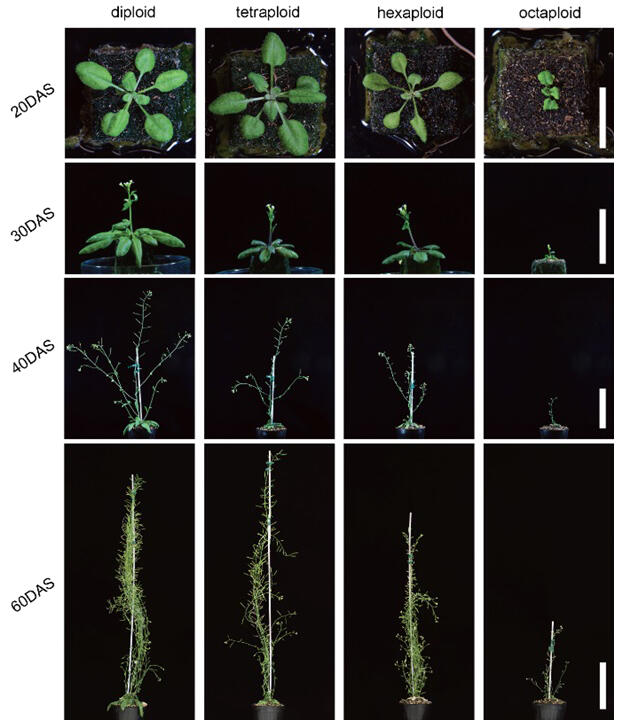A research group led by Professor Akitoshi Iwamoto of the Faculty of Science at Kanagawa University, in collaboration with Assistant Professor Suzuka Kikuchi of Yamaguchi University and Professors Sachihiro Matsunaga and Munetaka Sugiyama of the University of Tokyo, analyzed "high-ploidy syndrome," a phenomenon of growth suppression associated with extensive genome polyploidization in the model plant Arabidopsis thaliana. The group announced that their study revealed that this growth suppression is partly due to "chromosome polytenization," in which the increased chromosomes attach to each other. The clarification of this mechanism is expected to contribute to the development of more efficient methods for producing highly productive crops. The results were published in Journal of Experimental Botany, an international journal, on July 5.

https://doi.org/10.1508/cytologia.85.189
Polyploidization, in which the number of chromosome sets in a single cell is increased, has been used for various purposes, such as improving crop production. Organisms typically have two identical sets of chromosomes and are known as diploids. In plants, each chromosome undergoes duplication, often resulting in an increased number of the same chromosome sets, such as four, six, and eight sets. This phenomenon is called polyploidization. In particular, plants with a large increase in the number of chromosome sets are called high polyploids, and plant growth is generally promoted in this state. Meanwhile, "high-ploidy syndrome," which refers to growth suppression in high polyploids, was known in A. thaliana, but the underlying mechanism remained unclear.
The research group has studied this mechanism by combining kinematic analysis at the cellular basis to quantify plant growth and the unique whole-mount FISH method to examine chromosome status. In this study, cell proliferation and cell volume increase were significantly suppressed in high-polyploid A. thaliana. The group also suggests that the suppression of cell volume increase can be attributed to a phenomenon where chromosomes attach to each other for some reason (chromosome polytenization).
Iwamoto said, "In this study, we successfully obtained important results by combining the kinematic analysis to quantify both cell proliferation and volume increase in the root tip and a unique method developed mainly by Assistant Professor Suzuka Kikuchi (Yamaguchi University), the first author of the paper, for observing chromosomes in the root tip while preserving its structure. Moving forward, we will further analyze the chromosome status in polyploids to fully understand high-ploidy syndrome."
Journal Information
Publication: Journal of Experimental Botany
Title: Plant chromosome polytenization contributes to suppression of root growth in high polyploids
DOI: 10.1093/jxb/erae288
This article has been translated by JST with permission from The Science News Ltd. (https://sci-news.co.jp/). Unauthorized reproduction of the article and photographs is prohibited.




